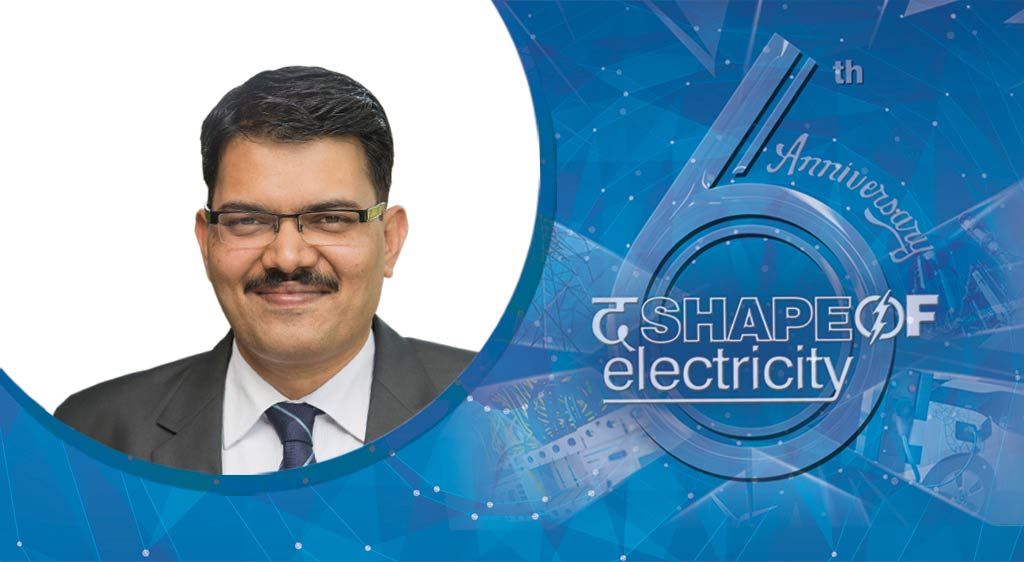Power transformation beyond milestones
By EPR Magazine Editorial November 14, 2018 2:14 pm IST
By EPR Magazine Editorial November 14, 2018 2:14 pm IST

Rajiv Menon, Managing Director, Black & Veatch India
“Despite the significant strides in installed renewable energy capacity, coal will remain central to India’s baseload generation for the foreseeable future.”
Rajiv Menon, Managing Director, Black & Veatch India, defines the transformation in the power sector as a revolution. Being quite optimistic about the ability of UDAY to improve the state DISCOMs, he believes transformation will continue beyond milestones and seal the financial ability of energy projects.
Coal still has the centre stage
We agree the power sector is in the process of transformation, but this is a process of evolution rather than revolution. Some of the changes are indeed radical: the 175-gigawatt (GW) capacity target for renewable energy by 2020, or the extension of power supplies proposed in Saubhagya, for example. Other changes are less substantial, but nonetheless contribute to a better holistic performance from the Indian power sector. For example, despite the significant strides in installed renewable energy capacity, coal will remain central to India’s baseload generation for the foreseeable future. About 60 per cent of India’s installed power capacity is coal-based. This is set to increase to 70 per cent in 2026, according to BMI Research.
But coal generation is evolving. New emissions norms – when implemented – will set standards for sulphur dioxide (SO2), oxides of nitrogen (NOx) and mercury. There are significantly tighter standards for particulate emissions. In addition, the demands coal plants placed upon water resources are being addressed: all plants with once-through cooling have to install cooling towers (CTs); existing CT-based plants need to reduce water consumption up to maximum of 3.5 m3/MWh; new plants need to achieve zero liquid discharge.
The drive for renewables is unquestionably the right thing to do. But facilitating this will require transformations in other areas of India’s feedstock mix. The trend for using gas to buffer intermittent renewable sources of power in countries like the UK and USA, is not lost on government. So, while renewable energy is making most of the headlines, transformation in our power sector is taking place across the board. Bear in mind also, that success in the areas discussed above will not mean we have reached a fixed end state. Our transformation will continue beyond these milestones – driven in large part by new technologies.
Uninterrupted quality power for all
Yes. Access to reliable power supplies is a proven stimulus for commercial activity – such as start-up businesses – and in the demand for electrical consumer goods.
Providing power for communities that do not have it, or giving reliable supplies to those with only intermittent power currently, will also help extend the reach of Digital India. This too will increase participation in economic activity and boost the demand for services. A digitally enabled population and growth of e-commerce will also stimulate the growth of new, digital information infrastructure, such as data centers, which requires uninterrupted quality power.
UDAY: For the optimistic performance of DISCOMs
Black & Veatch’s contributionAmong the highlights for 2018 was being selected by USTDA to provide engineering expertise for IL&FS Energy Development Company Limited’s 41 MW solar PV, wind and battery storage hybrid project in Andhra Pradesh. Projects like this will be vital to meet future demand. Battery storage is an important tool in stabilising the grid when a significant amount of renewable energy is integrated. The system will enable a more reliable and consistent output from the combined facility by stabilising fluctuations in output from the intermittent resources and providing services to support stabilisation of the grid. Such hybrid solutions, by optimising output and reducing variability, will also improve the bankability of renewable energy projects.
Solar powered irrigation
The technology is proven and – given the provenance of agriculture in India’s economy – has the potential to lessen demands on the power grid. Where irrigation is currently being powered by diesel generators, switching to solar will reduce emissions and support the government’s drive to reduce oil imports.
2022 is fast approaching
To strengthen DISCOMs’ financial position and performance, it is important to ensure that power, no matter what feedstock it is derived from, reaches the consumers 24/7.
With regard to the 2022 renewable energy target; a 2017 study by the Indian Institute of Technology and Observer Research Foundation found that Mumbai has the potential to generate 1.72-gigawatt peak (GWp) solar power per annum through rooftop solar – half of the city’s power needs. Currently, the city generates 5-megawatt peak power (MWp) solar energy.
At a country-wide level, a greater understanding of solar technology by small-to-medium size enterprises – and financial institutions – would be likely to see greater uptake by mid-scale solar commercial users.
At the nexus of the growth in renewables and addressing distribution challenges is the role of microgrids. With microgrids, however, challenges exist in terms of funding and viability due to the price differentials with state DISCOMs. Expediting projects such as the ambitious Green Energy Corridor programme to convey renewable electricity and strengthen renewable energy infrastructure will help stimulate the uptake of microgrids.
We are heading in the right direction, journey time may not be entirely as we anticipated, but progress to-date suggests we are well on the way.
We use cookies to personalize your experience. By continuing to visit this website you agree to our Terms & Conditions, Privacy Policy and Cookie Policy.